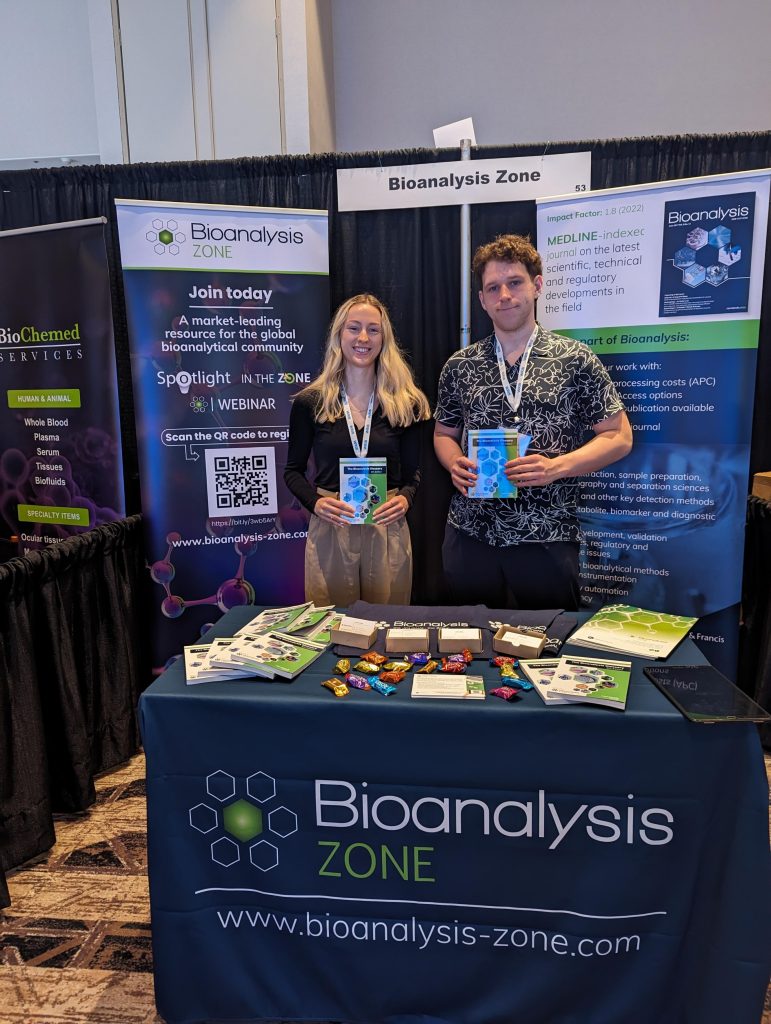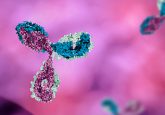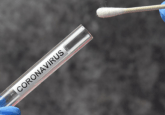Editor’s highlights from the 18th WRIB conference 2024

The 18th WRIB conference, 7−10 May 2024
The annual Workshops on Recent Issues in Bioanalysis (WRIB) conference was held in San Antonio (TX, USA) and followed the familiar program of bioanalysis for biomarkers, immunogenicity, gene therapies, cell therapies and vaccines. Browse our compiled Editor’s highlights from the event.
Editor’s highlights from the session
The rise of Olink® technology: strategy and case studies for implementation in clinical development
Speaker: Rachel Palmer, Sanofi (Paris, France)
Biomarker monitoring is crucial for informing clinical strategy and supporting clinical trials. Rachel began by affirming the benefits of optimizing many biomarker assays into one multiplex assay, including reduction of patient burden through decreased sample consumption, accelerated data delivery, cost savings and simplified operational procedures. She introduced the Olink platform, a proximity extension assay (PEA) technology enabling multiplex immunoassays of proteins using antibodies linked to DNA oligonucleotides. After delving into the technology’s workings, Rachel highlighted three case studies where Olink had been used in a research and GCLP-standard lab, including comparing Olink to MSD and ELISA results. In her summary, Rachel concluded that Olink provided a robust tool for absolute quantification of up to 45 biomarkers and that concentration values generally correlate well with MSD and ELISA results, but that some biomarkers on the panel lack sufficient sensitivity.
Managing change: impact of device and LDT regulations on testing landscapes for patient care and clinical trials
Speaker: Kristina McGuire, Regeneron (NY, USA)
Diagnostic testing is more common than ever before and even occurs in households to test for COVID-19 or to find out more about a person’s ancestry using tests such as 23andMe. Regulation of these diagnostic tests has increased globally by health authorities, as has the level of detail required for their definition. Kristina highlighted the key elements making up an in vitro diagnostic medical device and noted that many devices being used in clinical studies and not just in companion diagnostics will fall under this definition. She then detailed the pathways to placing a test on the market, the elements of an ‘intended use’ device and how these devices can be used in clinical trials. The uses of these devices included providing enrolment criteria, i.e., to determine disease diagnosis or healthy function, measuring the success of the trial, selecting specific patient subgroups, exploratory research, for example, to identify new biomarkers for the disease, and monitoring for the benefits and side effects of treatment. Kristina then summarized her talk with examples of the impact of in vitro diagnostic regulation.
Bioanalytical considerations of developing an individualized mRNA-based cancer vaccine
Speaker: Kate Peng, Genentech (CA, USA)
The development of individualized mRNA-based neoantigen-targeting immunotherapies has revolutionized oncology treatment and has provided significant learnings for the bioanalytical community. Kate began by introducing autogene cevumeran, an individualized neoantigen vaccine based on patient-specific mRNA combined with lipoplex nanoparticles, which protect the mRNA from degradation. The assay requires high sensitivity and the stability of the mRNA in stored plasma samples is unknown, presenting challenges for bioanalysts. Kate discussed adapting the QuantiGene™ assay platform to fulfill the high assay sensitivity requirement and explored the development of a universal mRNA PK method for patients receiving individualized treatments. Kate concluded by highlighting that understanding multiple factors is needed to design effective and fit-for-purpose bioanalytical strategies, including drug structure, target biology, clinical study design and operational complexities.
UK MHRA bioanalytical observations and findings from recent inspections
Michael McGuinness, UK MHRA (London, UK)
Michael begins by emphasizing that data integrity issues are not a problem of the past and continue to occur, listing frequent findings from UK inspections. These included issues relating to long-term stability and inconsistent application of analytical run acceptance criteria, which often involves introduction of company-specific procedures to ICH M10-approved processes. In addition, Michael discussed the rejection of acceptable high and low calibration standards from calibration curves, which can create misleading analysis reports. Michael urged that exercising control over your data and providing documentation to support decision-making is vital to ensure that the hard work of developers doesn’t go to waste.
21st century cures: biomarker qualification
Abbas Bandukwala, FDA (MD, USA)
During drug development, biomarkers can be used internally for exploratory purposes or for regulatory oversight to aid decision-making, the latter requiring qualification. Abbas began his talk by defining biomarker qualification – a formal regulatory review and acceptance process – that concludes whether the chosen biomarker can be relied upon to have specific interpretation and application in drug development and regulatory review within the stated context of use. He then went on to introduce the pilot program ISTAND (innovative science and technology approaches for new drugs) to accelerate the use of novel drug development tools through agency-wide coordination, effective communication and efficient regulatory review.
An update on clinical biomarker and CDx regulation in EU part 1 & 2
Jörg Engelbergs and Hilke Zander, EU EMA (Amsterdam, Netherlands)
Jörg began this two-part talk by outlining the complexities of the EU framework for predictive biomarker-guided medicines and companion diagnostics (CDx) and its differences from the FDA framework. He then delved into the role of biomarker assays in pharmaceutical studies and the marketing authorization application assessment. Hilke then picked up the second part of the talk and explored how personalized medicine based on predictive biomarkers is becoming increasingly important and the onset of a global revolution of classical regulatory concepts. She talked through the clinical aspects of co-developed CDx, including scientific validity and performance, and concluded the talk with the challenges and next steps.
Observations from review of immunogenicity of biotherapeutics
Meena Wadhwa, UK MHRA (London, UK)
Immunogenicity testing is mandatory for product approval and follows a risk-based approach including the product and its intended use, well-designed studies and optimal strategy/sampling for evaluation. Meena noted that an integrated summary of immunogenicity (ISI) – an overview of incidence, titers and persistence of anti-drug antibodies from each study and how they might have an impact on PK, PD, efficacy and safety – is absent from submissions in some cases, or in other cases is very skeletal without containing the necessary details. Elements missing from ISIs included validation summaries for assay methods, links to method development/validation reports for assays used in clinical studies and how risk assessment influenced the program, among others. Meena also explained that industry often has its own strategy, which may deviate from standard practices. She concluded by discussing strategies for testing neutralizing antibodies and the cut-points for ADA assays.
Enjoyed our Editor’s highlights? You can take a look at our previous conference reports here.

The Bioanalysis Journal and Zone team at the 18th WRIB conference: Jack Lodge, Managing Editor and Ellen Williams, Digital Editor.






